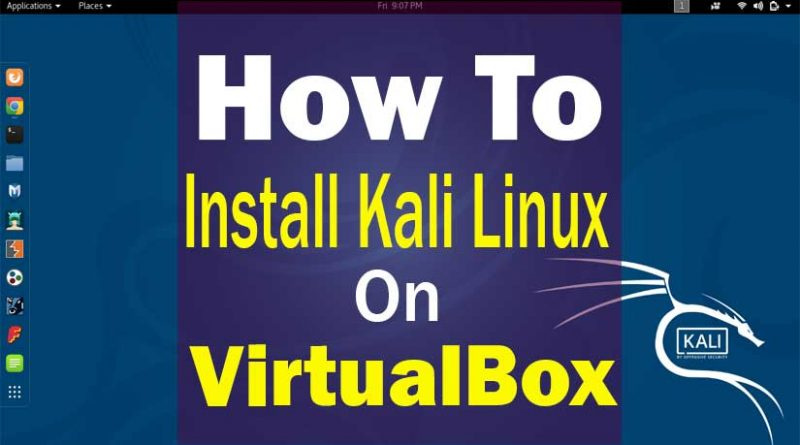

Next, we will leave the default option of ‘Create a virtual hard disk now’ selected and click the ‘Create’ button. The following window is ‘Create Virtual Machine.’ You can select 4GB of ram, which is the minimum required, but if you have 8GB to use, I recommend increasing it. The ‘Machine Folder’ can be left as default unless you need to change it for space requirements. In the first window of the setup wizard, ‘Name and operating system’ provide a name (any name) in the Name field. Also, have your ISO file downloaded and in a location, you can easily navigate to during the setup.Īt the Oracle VM VirtualBox Manager, click on the ‘New’ button to create a virtual machine. Please ensure that you already have VirtualBox and Extension Pack installed on your Windows 10 PC before installing Kali Linux in VirtualBox.


How to install Kali Linux VirtualBox Create Virtual Machine A minimum of 20GB hard disk space (40GB recommended).See the below specifications for more details. Related: How to Install Android in VirtualBoxīefore installing, you will want to ensure your computer meets the minimum requirements so this Kali Linux runs smoothly.If the topic of virtualization interests you, check out some more of our posts on the subject. There are many other options available for virtualization, including the free UTM app which allows you to easily run Windows 11 on an Apple Silicon Mac for example, but there’s also paid solutions including VMWare and Parallels. Go to to find the appropriate download, listed as “Developer preview for macOS / Arm64 (M1/M2) hosts”.As usual, VirtualBox is completely free to download and to use. While technically in beta, anyone can get access to the developer preview beta ARM build of VirtualBox through the VirtualBox website. It does this by virtualizing hardware (that you can adjust to allocate RAM, storage capacity, etc), so the operating system itself doesn’t know that it’s not running on actual hardware. VirtualBox is virtualization software that allows you to run other operating systems in containers on your Mac directly from the application, for example you can run Linux or Windows directly within VirtualBox, and without having to use dual-booting or anything else.


 0 kommentar(er)
0 kommentar(er)
